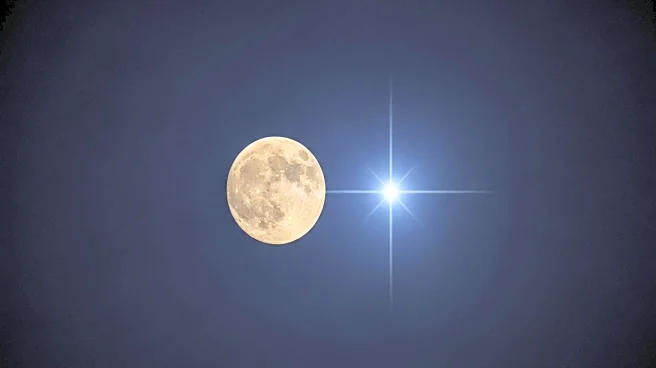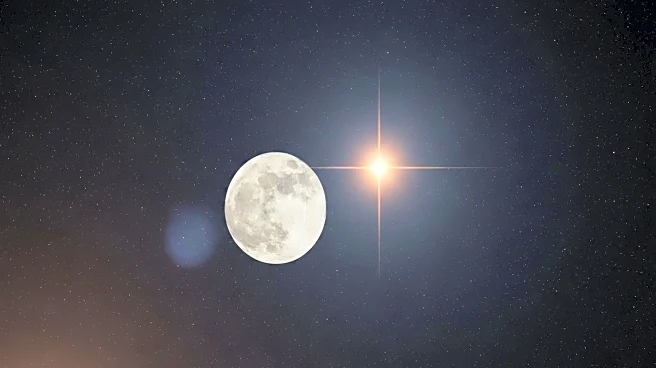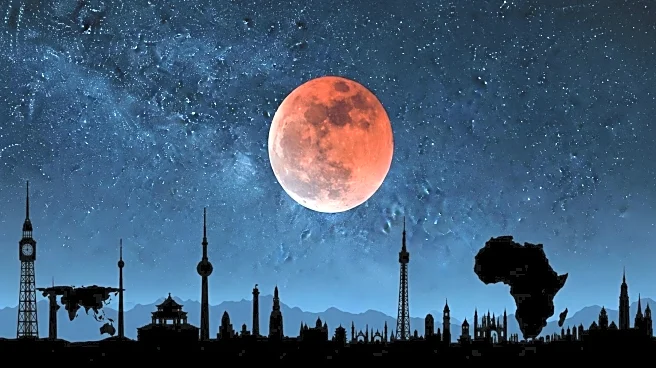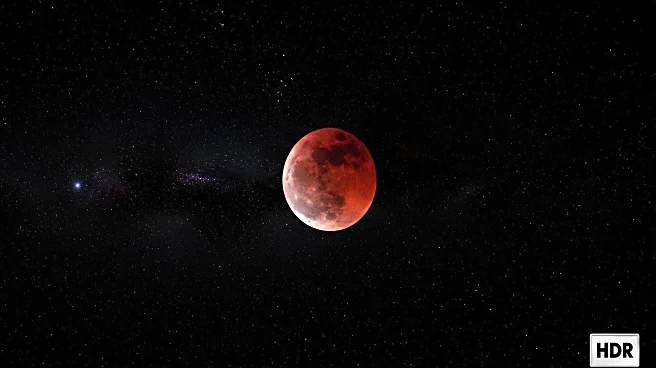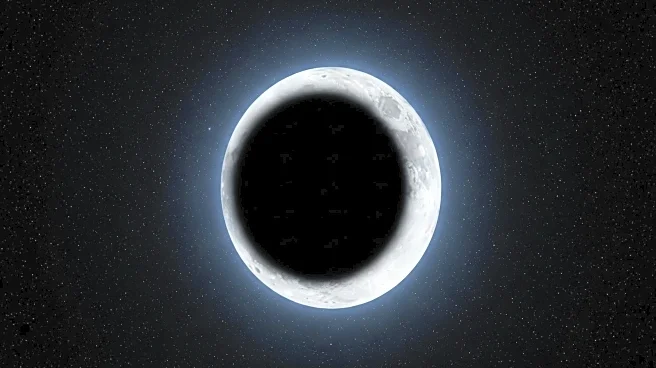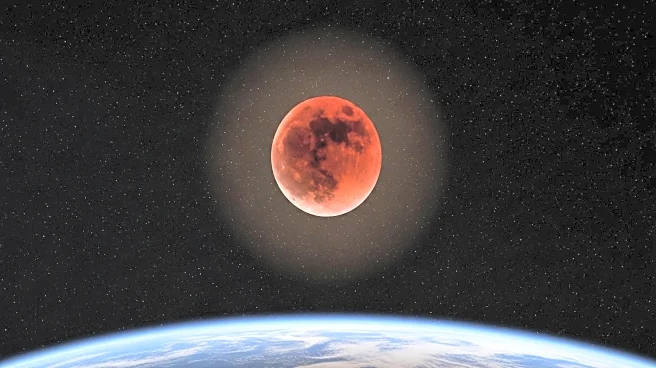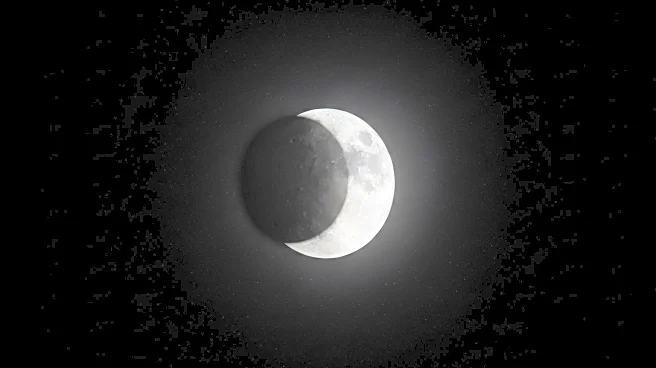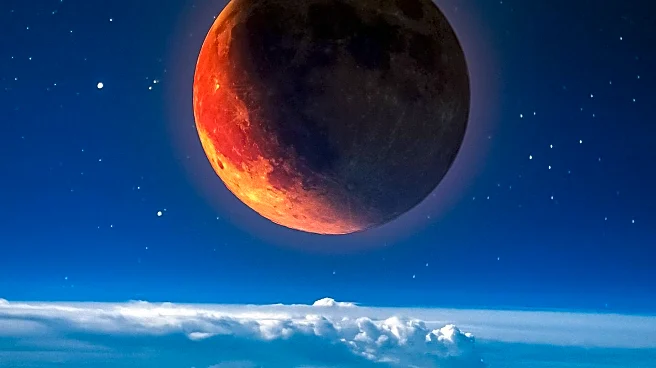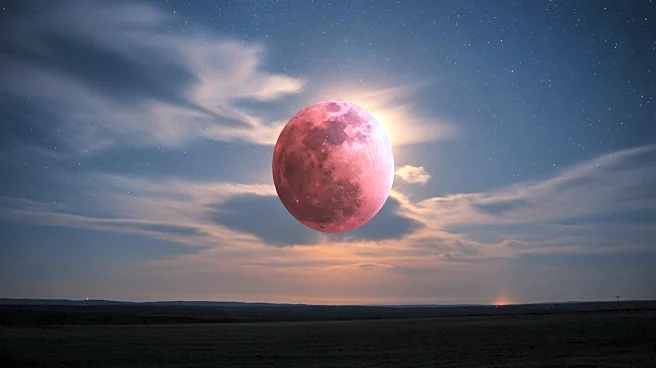What's Happening?
Skywatchers are in for a celestial treat as the moon approaches the red supergiant star Antares in the constellation Scorpius on August 30, 2025. The nearly half-lit moon will be visible about 20 degrees above the southwestern horizon at sunset, with Antares shining brightly approximately 5 degrees to the upper left of the waxing moon. This astronomical event occurs just before the moon reaches its first quarter phase on August 31, when the right side of the lunar disk will be fully illuminated by sunlight. Following this encounter, the moon will continue its journey eastward through the constellations of Sagittarius, Capricornus, and Aquarius, leading up to its full moon phase on September 7. This full moon will coincide with a total lunar eclipse, as Earth positions itself directly between the moon and the sun, resulting in a dramatic blood moon appearance.
Why It's Important?
The upcoming celestial events offer significant opportunities for both amateur and professional astronomers to observe and capture rare astronomical phenomena. The close proximity of the moon to Antares provides a unique chance to view one of the brightest stars in the northern hemisphere, often referred to as the 'heart of the scorpion.' The subsequent total lunar eclipse on September 7 will be a major event, as the moon will be bathed in Earth's shadow, creating a blood moon effect. Such events are not only visually spectacular but also provide valuable data for scientific research and public engagement in astronomy. The visibility of these events across the U.S. can inspire interest in space exploration and science education.
What's Next?
As the moon continues its path through the constellations, anticipation builds for the total lunar eclipse on September 7. Astronomers and photographers are preparing to capture the blood moon, with guidance available on imaging techniques and equipment recommendations. The eclipse will be visible across much of the U.S., offering a widespread opportunity for public viewing and educational events. Observatories and astronomy clubs may host viewing parties and workshops to engage communities in the wonders of the night sky.
Beyond the Headlines
The occurrence of a blood moon during a total lunar eclipse often sparks cultural and historical interest, as such events have been interpreted in various ways across different societies. The dramatic change in the moon's appearance can evoke myths and legends, highlighting the intersection of science and culture. Additionally, the visibility of Antares, a binary star system, underscores the complexity and diversity of celestial bodies, encouraging deeper exploration into stellar evolution and the dynamics of star systems.
